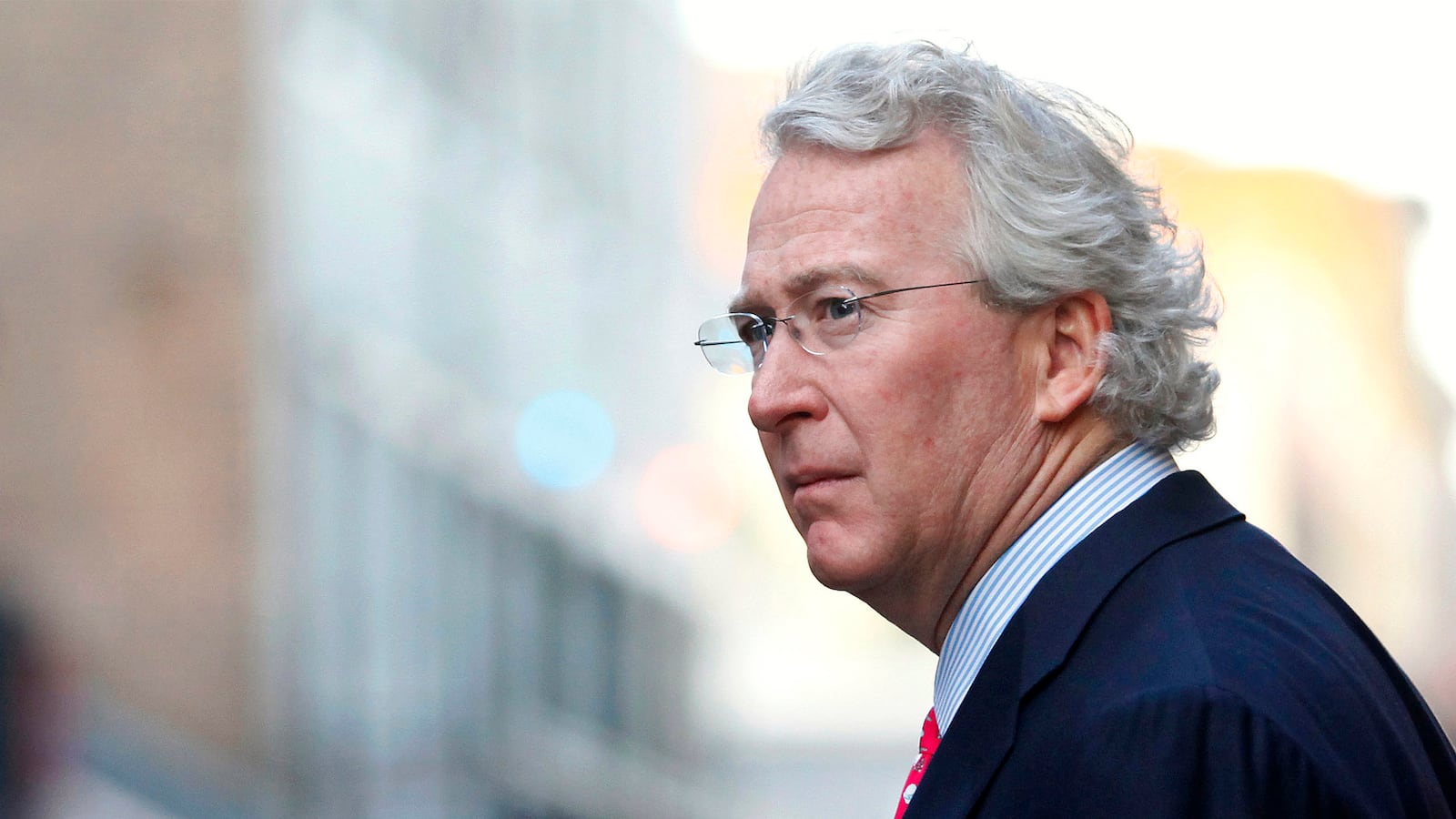Energy executive Aubrey McClendon slammed down the accelerator. As his Chevy Tahoe hurtled toward a highway overpass on a tiny two-lane road in Oklahoma City, he neared 90 miles per hour. The speed limit was 50.
Police later found that McClendon “touched his brakes several times” before making impact but not hard enough to stop. By the time he crashed head-on into the concrete, he was going 78 miles per hour.
McClendon died instantly. His car burst into flames. He was identified by his teeth.
Police have not definitively concluded that McClendon committed suicide and they refuse to speculate further. But evidence for that scenario continues to pile up. This week, the Oklahoma City Police Department (OCPD) announced that the ex-CEO of Chesapeake Energy experienced no health trauma immediately before the March 2 crash. He was not wearing a seatbelt when the crash occurred.
“He pretty much drove straight into the wall,” said Captain Paco Balderrama after first assessing the scene. “There was plenty of opportunity for him to correct and get back on the roadway and that didn’t occur.”The previous day, McClendon had been indicted on federal antitrust charges, accused of rigging the price of oil and natural gas leases in northwest Oklahoma. McClendon called the charges “wrong and unprecedented” and vowed to “prove [his] innocence.” But as Reuters reported, the charges prompted a large investor to cut ties. His emails, too, would likely be made public if he pleaded not guilty.
The possibility of an accident has not been ruled out and, in fact, it will be the default determination unless intent can be proven. Friends of McClendon told The Wall Street Journal that he often used his cellphone in the car. And OCPD investigators still want to know more about his mindset before the crash.
But the reality of McClendon’s case is that suicide by car accident is difficult to determine definitively. For this reason, as a 1995 study on the subject notes, “death by automobile offers a unique opportunity for concealment of suicide intent.”
That same study noted that the percentage of vehicular fatalities that are actually suicides could be anywhere from 1.6 to 5 percent, with the precise number impossible to calculate because “a significant albeit unknown proportion of vehicular deaths classified as accidents are in fact suicides.”
McClendon’s collision fits the usual profile for a vehicular suicide: He was the sole occupant of his vehicle and no other cars were involved. Another 2006 study of single-car accident drivers who survived their crashes found that general suicide risk was low but that “they were engaged in looking for a solution to their problems in which the accident played a role in such a process.”
In other words, if McClendon did take his own life, he may not have done so in a traditional, premeditated way. Some vehicular suicides are indeed intentional but one pioneering psychological analysis of suicidal men with a history of traffic accidents concluded that “unconscious self-destructive impulses” can be a key factor (PDF). Because car accidents are so common but so rarely used as a method of suicide, they can be used to avoid “consciously confronting” one’s own intent to die.
“[T]he automobile constitutes an ideal self-injurious or self-destructive instrument, particularly for persons intent upon camouflaging their suicidal motivation from others—and from themselves,” the researchers explained.
So far, OCPD have not released any information about a suicide note, or about a previous expression of intent to commit suicide.
“We don’t know what was going through his mind,” said OCPD Chief Bill Citty. “We don’t know what was going on in the cabin of the vehicle.”
Police may never know for sure if the embattled energy executive wanted to die. The brutal truth is that McClendon may not have known himself.






